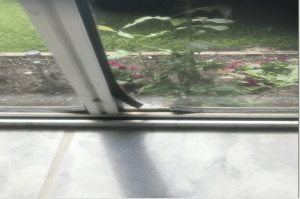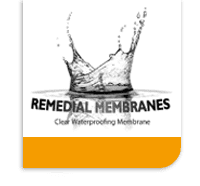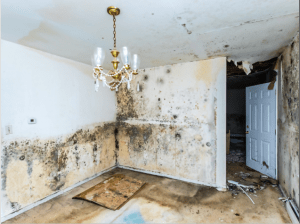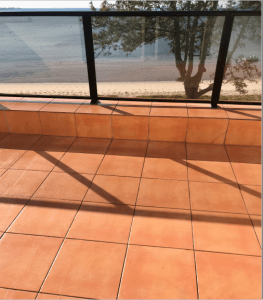Everything you do or don’t do will always cost you when it comes to your home and (although not particularly sexy) preventative maintenance always delivers cost savings. Sure, there’s the upfront money you have to put down but a rule of thumb goes that for every $1 you spend on maintenance you save up to $100 on future repairs. Making preventative maintenance up to 100 times cheaper!
Take a faulty tap washer for example. It will probably cost less than $5 to replace, an outlay that is significantly cheaper than the $200 you could end up paying over a year for the water lost from a quick drip tap.
Replacing a cracked external light fitting could cost up to $100, but compared to the cost of an electrical short and/or fire due to water getting in, — resulting in thousands of dollars in damage, or potentially the whole house needing to be rewired – it’s minimal. Such an event could even lead to electrocution and risk of death.
That’s the thing with water; it is always seeking to find a way in, its such an issue that 88% of Home Warranty Claims are regarding water ingress in a home. But what do you do when an installed waterproofing membrane fails? It’s a massive problem, but don’t worry, help is at hand. Read on to understand how truly expensive this sleeping giant can be as we show you how to handle it.
Failures in waterproofing membranes in showers and balconies both achieve a top 10 listing in Home Warranty Defects each and every year. Waterproofing failures are so routine and expected that they should be added to our preventative maintenance checklist. We get to the bottom of why it happens and when it happens to you and what you need to do.
Why is water so tough on our homes and so hard to keep out?
Water is a polar molecule it has a positive and a negative charge similar to a magnet meaning it has the ability to travel uphill against gravity to damage your home, it’s kind of like an intruder who is literally trying to break into your home 24 hours a day. Evaporation, capillary action, siphon are all terms that refer to water’s movement against gravity.
Consider a tree, water will evaporate out of the leaves drawing the moisture from the ground upwards. Water acts in a similar same way on a leaky balcony, gaining access through porous grout, cracks, etc. it will collect and sit on top of your waterproof membrane until it finds a rip, tear or failure, after which the water is absorbed through porous materials below your home’s membrane. This creates water flow, with each molecule pulling on the other. The damage to your home has begun. From mold to rot to electrical shorts and worse, water, once inside, has free reign to cause havoc and the longer it sits on your building materials and structure the higher the expense to you.
Why are leaks in wet areas so prevalent? In short, movement! Homes are built to move without being damaged. In this way, the expansion and contraction of materials through the seasons means we do not have to be constantly repairing cracks, but wet areas like shower recesses and balconies are rigid platforms sitting on top of flexible materials. Thus, over time, cracks appear giving water a chance to invade and cause damage. Let’s take a closer look at the areas prone to letting water in and see if there is any other cause or preventative measure we can take.
Shower
Do you have a leaking shower? Are neighboring walls wet or mouldy? Is the floor covering wet? Does water come from underneath the shower screen or around the glass?
If water is exiting from under the screen and/or glass then a simple bead of silicone can fix it. You can also arrange for a plumber to check your home’s pipe pressure to see if the leak is coming from the plumbing — or for anything else where your membrane could be damaged and in need of repair.
Balcony
Do you have a leaky balcony? Do you have wet or mould covered plasterboard or paint? Water dripping from light fittings? Wet flooring?
First, check to see if your sliding door tracks need to be cleaned out. If water can’t run off and away it will migrate into the home, pool and start causing problems.

As we now know that cracks and leaks are likely to occur in our wet areas, how quickly should we react to them?
Once you have identified that any leak or dampness is due to a failed membrane DO NOT DELAY in getting it repaired. Consider this case study provided by HIA Insurance posted below.
Case Study: A recent example involved a shower base waterproofing failure in a home built over 5 years prior. The eventual cost to repair the damage was more than $240,000 –almost the original build cost! — (1)
With movement being the main reason for the failure of membranes in leaky wet areas you only really have two options:
1. Clear Over Tile Waterproofing Membrane
2. Rip up and redo the area.
Clear Over Tile Waterproofing Membrane
In most instances the tiles in your shower or balcony are in good condition, so why rip up good tiles to get to a failed membrane? Movement of the structure will continue to increase as the home ages so why rip up existing tile to simply put down a membrane that will require the same expensive approach once it fails again?
REMEDIAL MEMBRANES
Clear Waterproofing is a 2 part aliphatic polyurethane-waterproofing membrane, meaning it expresses a perfect combination of flexible, tough and trafficable qualities. It’s clear, so the look of the existing surface will remain unchanged, and the whole process can be done inside a week. Also, being on top of the surface all future issues can be easily addressed with a simple patch repair and it’s between 10-30% of the cost of a rip out and replace/repair of your shower and/or balcony.
Clear Waterproofing Membrane is always going to be the way to go because an under-membrane only has a limited life span that once it fails is both difficult and expensive to access.
Jasmin Aleknavicius an experienced Tiler/Waterproofer and spokesperson for Remedial Membranes says: I always go with Remedial Membrane’s Clear Waterproofing Membrane because I’m practical. Eventually, all types of waterproofing membrane will fail, but Remedial’s Clear Membrane is installed on top, so I can repair it easily with little future expense, especially when compared to ripping out and redoing a balcony or shower every 5 to 10 years.
I also liked the DIY option as there are many capable people out there, but a lot of people like to get an Accredited Installer to install it for them as remedial waterproofing is viewed as a bit complicated.
The message is clear if you have a water leak ACT NOW otherwise the cost becomes compounding


